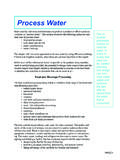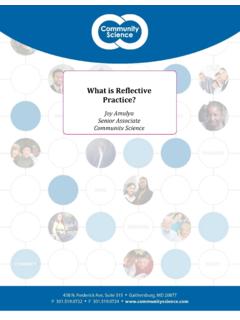Transcription of New Directions on Agile Methods: A Comparative …
1 Copyright 2003 IEEE. Published in the Proceedings of the International Conference on Software Engineering, May 3-5, 2003, Portland,Oregon, Directions on Agile Methods: A Comparative AnalysisPekka Abrahamssona, Juhani Warstab, Mikko T. Siponenb and Jussi RonkainenaaTechnical Research Centre of Finland, VTT 1100, FIN-90571 Oulu, FinlandbDepartment of Information Processing 3000, FIN-90014 University of Oulu, Finland{ , { , software development methods have caught theattention of software engineers and researchersworldwide. Scientific research is yet scarce. This paperreports results from a study, which aims to organize,analyze and make sense out of the dispersed field of agilesoftware development methods .}}
2 The Comparative analysisis performed using the method s life-cycle coverage,project management support, type of practical guidance,fitness-for-use and empirical evidence as the analyticallenses. The results show that Agile software developmentmethods, without rationalization, cover certain/differentphases of the software development life-cycle and most ofthem do not offer adequate support for projectmanagement. Yet, many methods still attempt to strive foruniversal solutions (as opposed to situationappropriate) and the empirical evidence is still verylimited. Based on the results, new Directions aresuggested. In principal, it is suggested to place emphasison methodological quality not method Introduction Agile denoting the quality of being Agile ; readinessfor motion; nimbleness, activity, dexterity in motion ( ) software developmentmethods attempt to offer once again an answer to theeager business community asking for lighter weight alongwith faster and nimbler software development is especially the case with the rapidly growing andvolatile Internet software industry as well as with theemerging mobile application environment.
3 The new agilemethods have evoked a substantial amount of literatureand debates [ , 1, 2, 3]. Agile proponents claim that the focal aspects of lightand Agile methods are simplicity and speed [4-6]. Indevelopment work, accordingly, development groupsconcentrate only on the functions needed immediately,delivering them fast, collecting feedback and reactingrapidly to business and technology changes [7-9].The emerging of numerous different Agile methods hasexploded during the last years and is not showing anysigns of ceasing. This has resulted in a situation whereresearchers and practitioners are not aware of the existingapproaches or their suitability for varying real-life softwaredevelopment situations.
4 As for researchers and methoddevelopers, the lack of unifying research hinders theability to establish a reliable and cumulative aim of this paper is to organize, analyze and makesense out of the dispersed field of Agile softwaredevelopment methods . Based on the result of the analysis,practitioners are in a better position to understand thevarious properties of each method and make theirjudgment in a more informed way. For these purposes, ananalytic framework is constructed, which guides theanalysis of the different existing methods . To scrutinizethe Agile methods the following five perspectives arechosen: software development life-cycle including theprocess aspect, project management, abstract principlesvs.
5 Concrete guidance, universally predefined vs. situationappropriate ( , fit-for-use), and empirical rest of the paper is composed as follows. Thesecond section presents a short overview of the existingagile methods . The third section presents the lenses forthe subsequent analysis. The fourth section presents acomparative analysis of the referred methods and the fifthsection discusses the significance and the limitations ofthe findings. The sixth section concludes this study,recapitulating the key 2003 IEEE. Published in the Proceedings of the International Conference on Software Engineering, May 3-5, 2003, Portland,Oregon, An overview of Agile methodsIn this section the existing Agile methods are identifiedand their objectives briefly introduced.
6 Figure 1 shows themanifold Agile software development methods and theirinterrelationships together with their evolutionary 1, purposefully, extends the considerations beyondthe scope of this paper. This means that some, morephilosophical meta-level expositions, which have in theirturn impinged upon the preceding Agile methods eitherdirectly or indirectly are included in the diagram. Figure 1also depicts ( , using a dashed line) which methods (ormethod developers) contributed to the publication of theagile manifesto. ( ).For the purposes of this paper, Agile softwaredevelopment in general is characterized by the followingattributes: incremental, cooperative, straightforward, andadaptive [10].
7 Incremental refers to small software releases,with rapid development cycles. Cooperative refers to aclose customer and developer interaction. Straightforwardimplies that the method itself is easy to learn and tomodify and that it is sufficiently documented. Finally,adaptive refers to the ability to make and react to lastmoment changes. Due to limited space, readers are referredto [10] for further discussion on other possiblecharacterizations. In the following, each method sobjectives are briefly software development. Adaptive softwaredevelopment (ASD) [11] attempts to bring about a newway of seeing the software development in anorganization, promoting an adaptive paradigm.
8 It offerssolutions for the development of large and complexsystems. The method encourages incremental and iterativedevelopment, with constant prototyping. One ancestor ofASD is RADical Software Development [12]. ASDclaims to provide a framework with enough guidance toprevent projects from falling into chaos, but not too much,which could suppress emergence and modeling. Agile modeling (AM) [13] is a newapproach for performing modeling activities. It attempts toadapt modeling practices using an Agile philosophy as itsbackbone. The key focus in AM, therefore, is on modelingpractices and cultural principles. The underlying idea is toencourage developers to produce sufficiently advancedmodels to support acute design needs and documentationpurposes.
9 The aim is to keep the amount of models anddocumentation as low as possible. Cultural issues areaddressed by depicting ways to encouragecommunication, and to organize team structures and waysof family. The Crystal family of methodologies[14-16] includes a number of different methods from whichto select the most suitable one for each individual the methods , the Crystal approach also includesprinciples for tailoring these methods to fit the varyingcircumstances of different projects. Each member of theCrystal family is marked with a color indicating the heaviness of the method. Crystal suggests choosing theappropriate-colored method for a project based on its sizeand criticality.
10 Larger projects are likely to ask for morecoordination and heavier methods than smaller methods are open for any development practices,tools or work products, thus allowing the integration of,for example, XP and Scrum systems development method. Dynamicsystems development method (DSDM) [17, 18] is a methoddeveloped by a dedicated consortium in the UK. The firstrelease of the method was in 1994. The fundamental ideabehind DSDM is that instead of fixing the amount offunctionality in a product, and then adjusting time andresources to reach that functionality, it is preferred to fixtime and resources, and then adjust the amount offunctionality accordingly.







